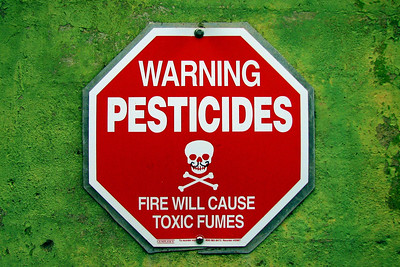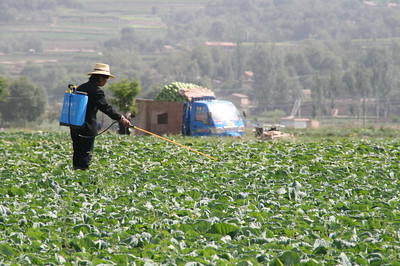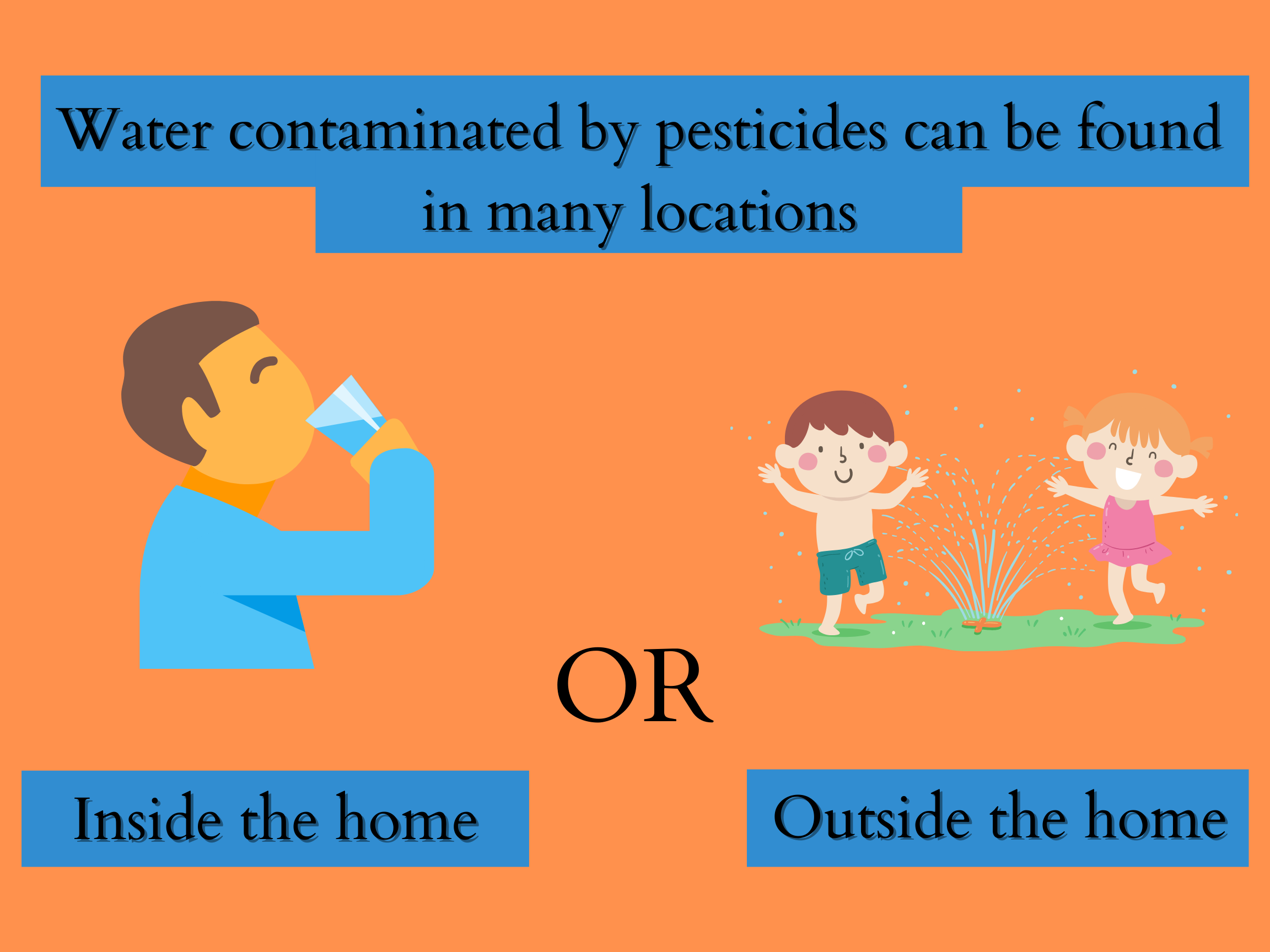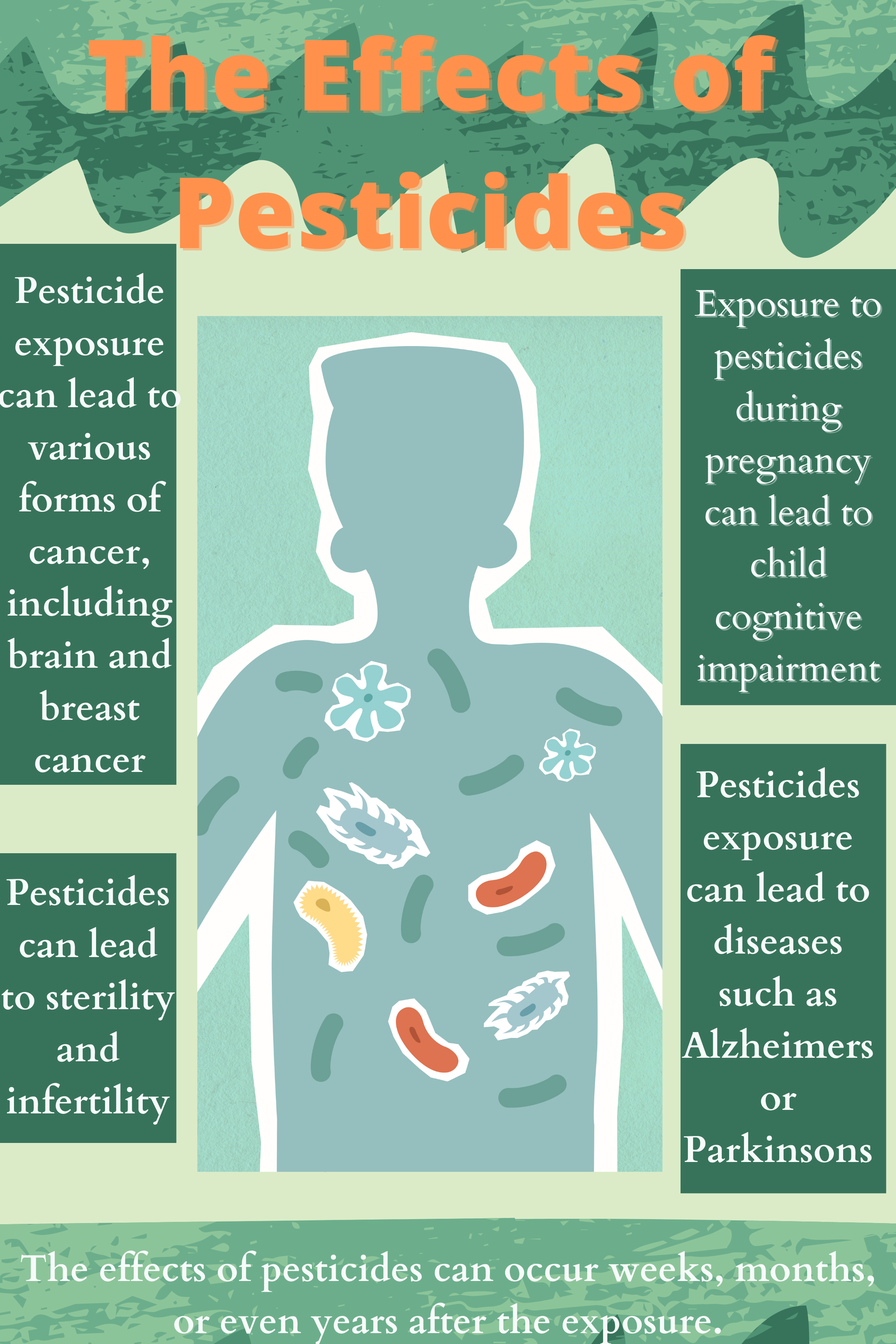What’s the deal with Pesticides?

What are Pesticides?
The Environmental Protection Agency defines pesticides as any substance or mixture of substances used to prevent, destroy, repel, or mitigate any pest.
What are the different types of Pesticides?
Herbicide – an herbicide is a pesticide used to kill plants or prevent plant life from growing. Some common examples are Round Up or any generic weed killer.
Fungicides – fungicides are pesticides used to kill forms of fungus. Fungi are a form of plant that tends to grow in dark, damp places. Basements with leaky pipes would be a prime place for fungi to grow.
Insecticides – Insecticides are pesticides used to kill insects in homes and in agriculture/farming settings. Insecticides come in many forms using many different types of chemicals. Organophosphates (Or-gan-no-fas-fate) (OPs), Pyrethroids (Pai-ree-throydz), and Neonicotinoids (Nee-oh-nic-oh-tih-noyd) are all examples of insecticides that attack the nervous system of insects, ultimately causing death.



Why does this matter?
Pesticides are all around us- much more than we might think. One study analyzed pollution levels in the streams of 8 major cities. The city with the highest concentration of insecticide and herbicides was Washington DC. This is especially concerning because there was no agricultural land near the DC water sources, which suggests that pesticides may reach our water sources through the air (1). 50 million people in the United States get their drinking water from groundwater, so it is critical to know whether there are pesticides in our streams, how pesticides impact human health and wellbeing, and what we can do to prevent contamination.
What makes Pesticides Dangerous?
Pesticides are dangerous because the reported level of toxicity (that is, the amount of a substance needed to be poisonous) is often an underestimate of how dangerous it can be to human health. Even though pesticides are mixtures, only the toxicity of the active ingredient is reported. In a recent analysis, when the toxicity levels of 9 major pesticide mixtures were tested, 8 of them were found to be up to 1000 times more toxic than their active ingredient alone. Round-up, a common brand of pesticide used to kill weeds, was among the highest in both herbicide and insecticide toxicity (3).
Organophosphate-based insecticides have been linked to several disorders of the brain, through the degeneration of axons in the brain – axons are the parts of nerve cells that transmit information from one cell to another.
How Do Economic Resources Relate to Pesticide Exposure?
There are many risk factors for pesticide exposure including where you work (e.g., if you are a farmer) and what state you live in (e.g., California). Housing conditions may also impact your risk of pesticide exposure. In 2004, six states sued the Department of Housing and Urban Development (HUD) for poor maintenance of low-income housing that resulted in greater exposure to pesticides. The Attorney General of New York was quoted saying (4):
“Pesticides are poisons that can damage people’s health. There is a danger that infants and children will be harmed as a result of pesticide exposure. It is imperative that HUD fulfill its legal obligation to promote the use of Integrated Pest Management to effectively control pests and improve the quality of life and the health of millions of people who live in HUD housing.“
However, even as socioeconomic disparities in housing-based pesticide exposure were recognized by the government, it continued. Seven years after this lawsuit, one study found elevated levels of pesticides (both Ops and Pyrethroids) in low-income households in urban and agricultural areas in California (5). Similar results were reported in New York and Boston (6).
Socioeconomic disparities in pesticide exposure represent a major public health. However, there are organizations fighting for public health against pesticides. Beyond Pesticide is a non-profit based in Washington D.C working against the use of pesticides. To learn more, click here.
Are Children Especially Vulnerable?
Children are especially vulnerable to the effects of pesticides. Periods of rapid development, from the prenatal period through childhood, increase susceptibility for the negative effects of pesticides in terms of the development of multiple organs including the brain (7).
For example, one study examined the associations between pesticide exposure and child cognitive outcomes. The authors found that children from pregnant mothers with the highest level of OPs in their urine showed an average deficit of 7 IQ points (8). This same team also found that exposure to pesticides postnatally (after birth) also increased risk for behavioral problems,and poorer short-term memory, executive function, and motor skills (8).
Children are also at an increased risk because of how they interact with the world (7). One of the most common ways for a child to be exposed to pesticides is by putting a contaminated object in their mouth!! This means that children are vulnerable to the negative effects of pesticides exposure because of both increased biological sensitivity and behaviors typical of children.
What Can I Do?
You have already taken the first step by reading this blog and becoming aware of the dangers that pesticides can pose to human health and wellbeing. The next step is to reduce pesticide usage both inside and outside of your home. Integrated Pest Management can also help with get rid of pests without using pesticides and risking toxic aftereffects.
To learn more about Integrated Pest Management and how to implement it into your own home, click here.
(1) Hoffman, R.S., Capel, P.D. and Larson, S.J. (2000), Comparison of pesticides in eight U.S. urban streams. Environmental Toxicology and Chemistry, 19: 2249-2258. https://doi.org/10.1002/etc.5620190915
(2) Alavanja M. C. (2009). Introduction: pesticides use and exposure extensive worldwide. Reviews on environmental health, 24(4), 303–309. https://doi.org/10.1515/reveh.2009.24.4.303
(3) Robin Mesnage, Nicolas Defarge, Joël Spiroux de Vendômois, Gilles-Eric Séralini, “Major Pesticides Are More Toxic to Human Cells Than Their Declared Active Principles”, BioMed Research International, vol. 2014, Article ID 179691, 8 pages, 2014. https://doi.org/10.1155/2014/179691
(5) Quirós-Alcalá, L., Bradman, A., Nishioka, M. et al. Pesticides in house dust from urban and farmworker households in California: an observational measurement study. Environ Health 10, 19 (2011). https://doi.org/10.1186/1476-069X-10-19
(6) Chensheng Lu, Gary Adamkiewicz, Kathleen R. Attfield, Michaela Kapp, John D Spengler, Lin Tao, and Shao Hua Xie, Environmental Science & Technology 2013 47 (4), 2018-2025. DOI: 10.1021/es303912n
(7) National Research Council (U.S.). Committee on Pesticides in the Diets of Infants and Children. (1993). Pesticides in the diets of infants and children. National Academy Press.
(8) Maryse F. Bouchard, Jonathan Chevrier, Kim G. Harley, Katherine Kogut, Michelle Vedar, Norma Calderon, Celina Trujillo, Caroline Johnson, Asa Bradman, Dana Boyd Barr, and Brenda Eskenazi. (2011). Prenatal Exposure to Organophosphate Pesticides and IQ in 7-Year-Old Children. Environmental Health Perspectives, 119(8): 1189-1194. https://doi.org/10.1289/ehp.1003185
(9) Brenda Eskenazi, Amy R. Marks, Asa Bradman, Kim Harley, Dana B. Barr, Caroline Johnson, Norma Morga, and Nicholas P. Jewell. (2007). Organophosphate Pesticide Exposure and Neurodevelopment in Young Mexican-American Children. Environmental Health Perspectives, 115(5): 792-798. https://doi.org/10.1289/ehp.9828
“Warning Pesticides: Fire Will Cause Toxic Fumes” by CGP Grey is licensed under CC BY 2.0
“Spreading Pesticide” by IFPRI is licensed under CC BY-NC-ND 2.0
Recent Comments